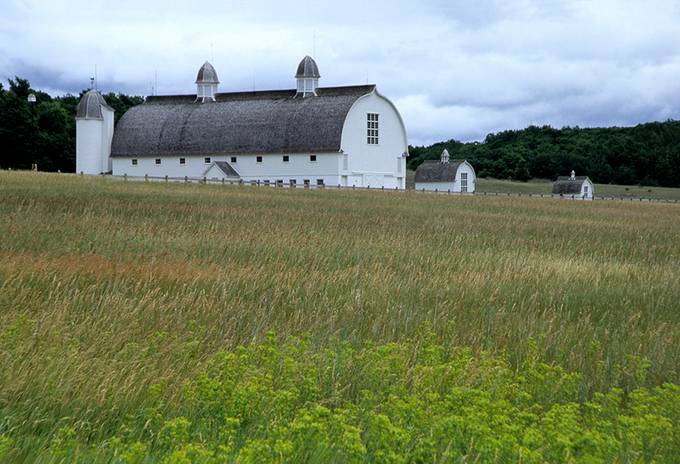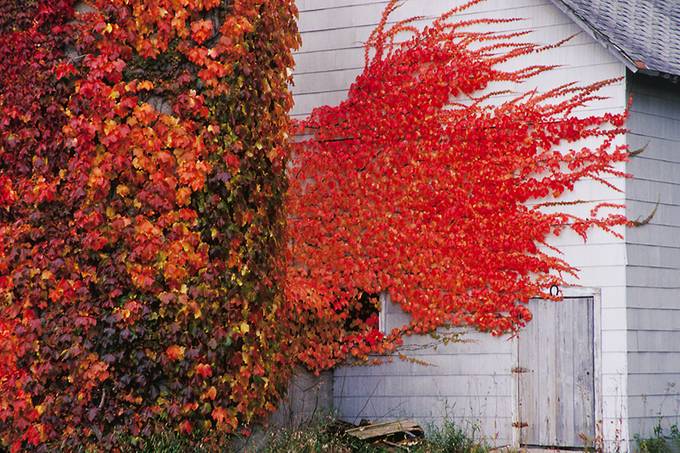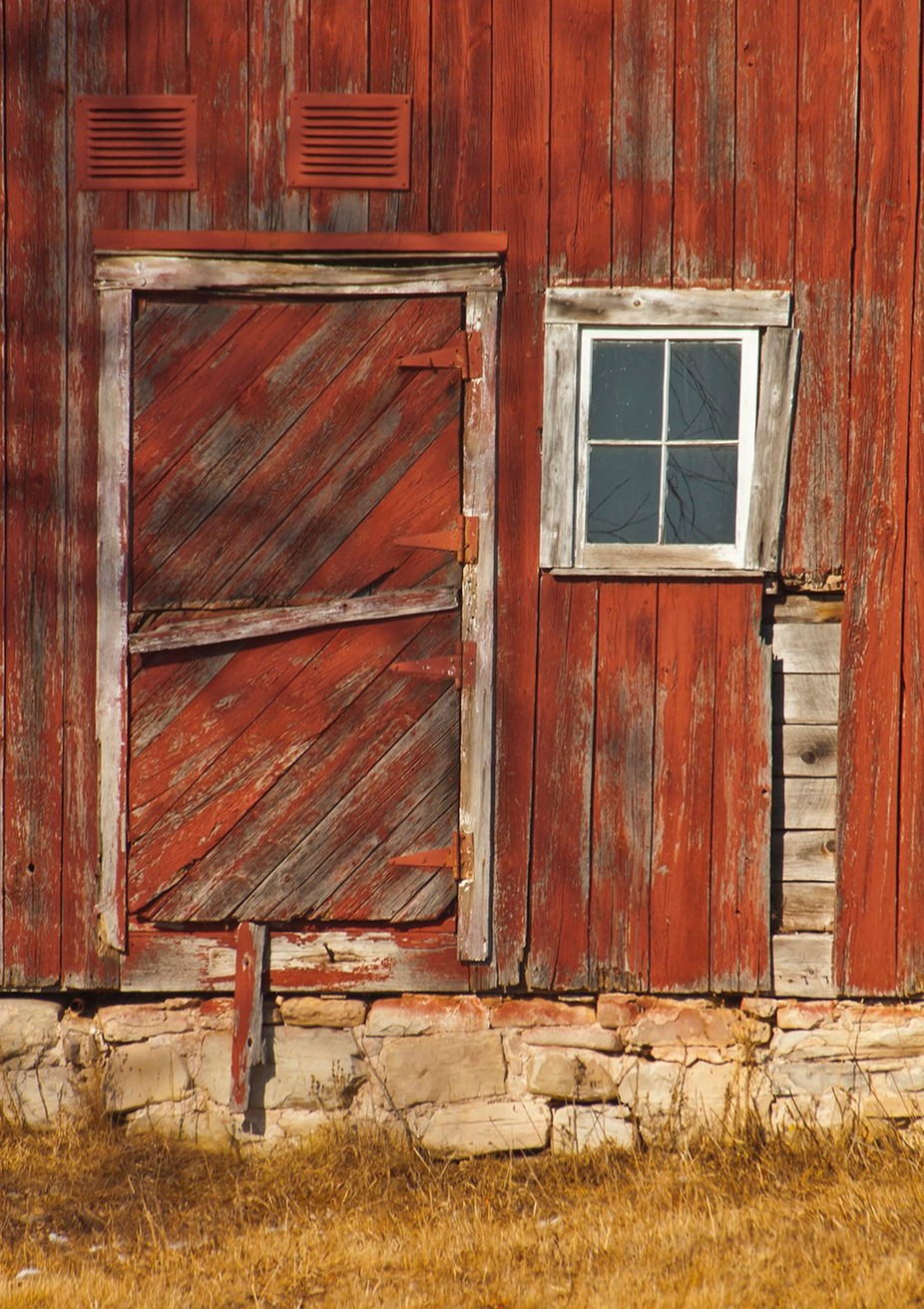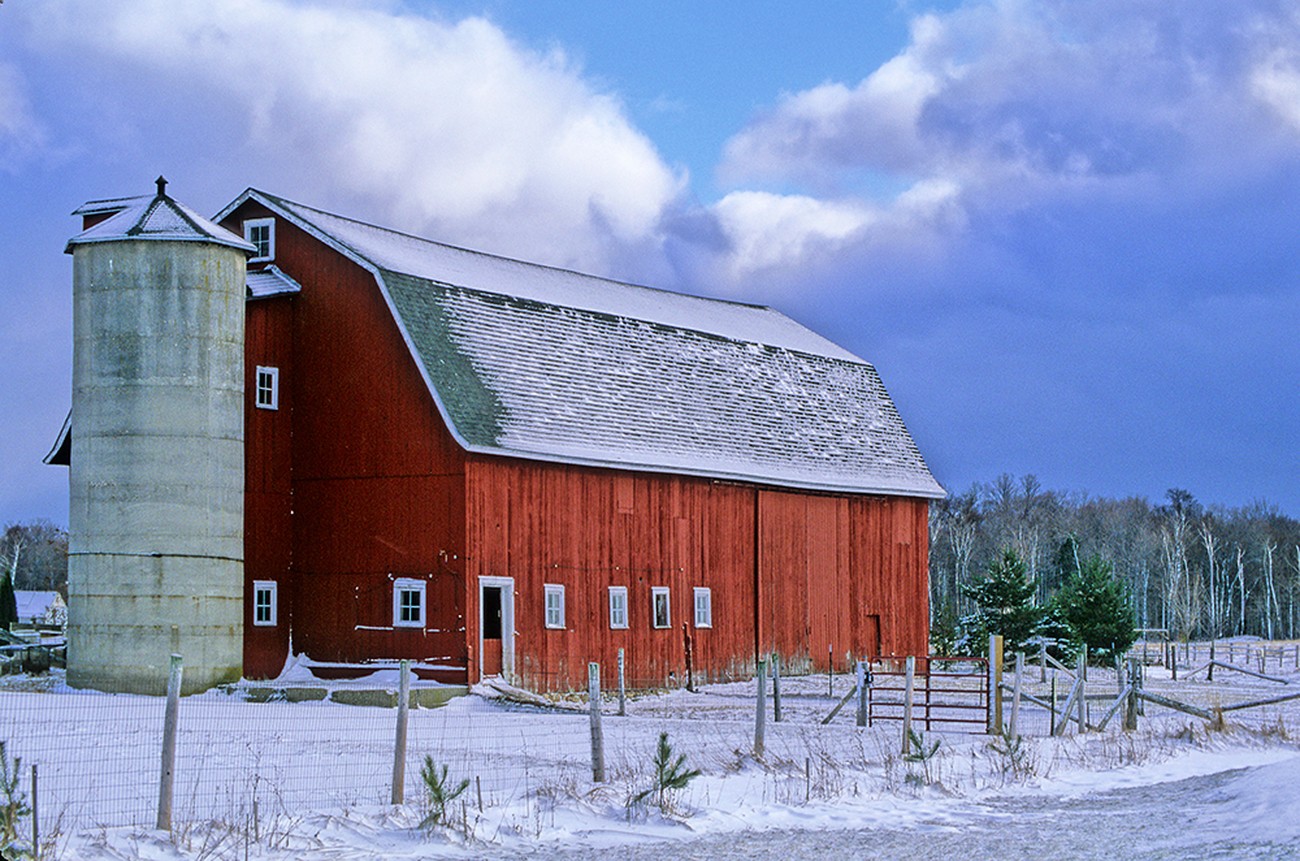As a young photographer just learning the trade I was taught architectural photography as a separate entity (as compared to other kinds of photography – product, location, food, fashion, portraiture, etc.). Photographing barns and other buildings meant controlling perspective which meant for the most part, using large format gear like a view camera. If you didn’t own or have access to a view camera, you simply backed way up to lessen the angle to the subject and made images with longer focal lengths. Longer focal lengths also gave you greater ability to deal with backgrounds, either being selective to the amount of background used or to drop backgrounds softer if you wanted. Today of course we can easily correct perspective in the computer so we no longer need view cameras and perspective control lenses. Backgrounds still require serious attention so they don’t compete with your center of interest.
We were taught the classic architectural view point; 45 degrees to a corner of the building and the midpoint of the height of the building (from as close to as we could get) would give the viewer of the image the best combination of an idea of size, shape, and structure. Backing up would lower the angle of view to the midpoint giving one the least amount of perspective distortion if you didn’t have gear that allowed perspective control. To emphasize various parts of a building you could then choose to use other focal lengths to emphasize those elements by intentionally distorting prospective. An example would be using a wide angle lens physically close to a building and pointed up towards a peak of a roof, a tower shape like a silo, or a gable end, etc.

Red Barn against a blue sky ©Hank Erdmann
We do need to consider getting permission when photographing on private property. I always like to ask before walking on to someone’s property to photograph just about anything. If it’s sunrise (early in the morning, I’m not going to wake someone up at o’dark thirty, but if I’ve pre-scouted a site, I’ll stop prior to the day I want to be there and ask permission and let the property owner know when I want to make images. More often and in the case of a chance sitting with great light and other conditions, I just shoot from public right of way, a road, trail, etc. Such images are usually fine for editorial use and print sales if such commercial aspects of your work are important to you. Stock photography agencies will however require property releases for non-editorial use or if the structure is a recognizable one or copyrighted in some way. Personal image use and print use rarely requires property releases. However, even if you never plan on selling an image, you still need permission to enter somebody’s property. It really comes down to respect for personal property and creating good relations with property owners for all photographers that may come later. In all the times I have knocked on a door to ask an owner’s permission to photograph a building I’ve never been turned down completely. I’ve been told not to walk here or there for safety reasons and even once told I couldn’t be on the property for insurance reasons, but could photograph from the road.

“Barn Storm” White barn and pasture ©Hank Erdmann
On one occasion an image I made of a barn from a roadside ended up on a regional magazine cover and the publisher sent me a copy of a letter the barn owner sent to the magazine. I was thrilled to learn that the barn owner was also thrilled to have their barn on the cover and wondered what it would cost them to have a print made. Here was an opportunity not to be missed! I made a print, matted it and put it in an inexpensive frame and the next time I was in that area, I stopped at the farmhouse, knocked on the door and introduced myself. At first the man was a bit hesitant, thinking I was going to try and sell him and expensive framed print, but I quickly told him that this was simply a gift and that I was so happy that he liked my image and was excited to have it on the cover of the publication. Simple actions like giving someone an inexpensive print (I do my own printing, matting and framing so it cost me very little) do more for other photographers wanting to make images at a later date. I’ve been back to that site many times since and even taken classes there to photograph with no restrictions from the property owner. It’s a simple way of giving back.
Barn color; red is not the only color! I think I’ve seen a barn painted in just about every color of the rainbow. Red barns are truly eye catching, especially against a cool colored background, ie a blue sky (preferably with puffy white clouds!), a green forest, a grey/purple stormy sky, and such. Other colored barns are attractive as well, white barns, gray barns, and brown barns are all photogenic with the right background. I’ve seen green barns, mustard yellow barns, blue barns, even one painted like an American flag! They all work if the background works. Backgrounds have to be complimentary and not compete with or distract from your center of interest.

“Flame Barn” White Barn and Silo with Ivy ©Hank Erdmann
Don’t forget the pieces and the details when shooting these wonderful structures. Copulas, doors, roof peaks, windows, wood grain, rock foundations, all the pieces of a building that together create the whole, can be more interesting often than the larger view. Bringing in the landscape of where the barn sits is also a great technique to employ. Growing crops in relation to the building, can give a seasonal aspect to a barn, as can freshly tilled ground, crop stubble and even a snow or ice aspect for the winter scene.

“Barn Door” Red Barn Door, Window and Foundation ©Hank Erdmann

"Old Lace" Barn Window Curtain ©Hank Erdmann
Derelict barns can be incredibly interesting to photograph, but take a look at any barn calendar and it is very unlikely that you’ll see a derelict on a calendar page. They are fun to photograph, but remember just because a barn is collapsed or falling over doesn’t mean you can wander around or in it. If it’s on private property you still need permission to enter the property. Understand also that such structures can be dangerous and if they look like they’re unstable, they are! Stay safe and outside such a structure, no image is worth injury of worse. Such structures will have interesting pieces and often those pieces make better images than the whole building.

”Rusty Tin Roof” Derelict barn ©Hank Erdmann
Photograph these great structures when you find them as they are making very few new wooden barns. Aluminum pole barns may be cost effective but they are not usually the most interesting structures for image making. Wooden barns are a window to our past and are stories waiting to be told in pictures. Combining history, architecture and art, is one reason that photographing barns is so enjoyable and a worth while activity.


